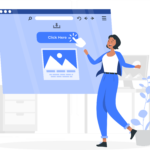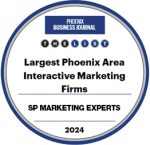With the internet’s ever growing list of tips for social media, it may be hard to pinpoint what works for each platform. If you’re thinking about launching Facebook ads, take this as your personal reference guide to create effective, profitable campaigns.
First, Campaign Strategy
1) Add the Facebook Pixel Code
Like Google Analytics, you can carefully track your conversations and optimize your campaigns with the data your receive from Facebook Pixel. Pixel will capture and track the movements of all website visitors who are currently logged into Facebook or get a link to your website through Facebook. Simply add Pixel to your website by visiting your Ads Manager for the installation code.
2) Ditch the Sale Campaigns, Focus on Education and Trail Offers
Facebook is not an eCommerce platform, so don’t try to sell your products through sponsored ads. Take advantage of Facebook’s general audience and the social sharing space they’ve created. Feature your latest trendy products, exclusive white papers and guides, or even free trial offers. Facebook’s general audience will connect with these posts more than any sale post or “buy now” offer. Keep in mind that social media platforms, including Facebook, are meant to build brand awareness rather than to generate new leads.
3) Take Advantage of Facebook’s Targeted Ads
If your company serves only local residents or targets a specific demographic, be sure to set up targeted ads. When you set up a targeted ad, you’re able to define location parameters, demographic specification, and even income variables.
4) Test Ad Positions and Types
Don’t limit your advertising displays to a single picture in the newsfeed. Facebook offers an array of ad positions and types to enhance user experience based on your needs and desires as a business.
Ad Options:
Explore Facebook’s ad options below or reference Facebook’s ad placement guide.
- Newsfeed Link: Newsfeed link ads display while users are scrolling through their newsfeeds. They typically display a short video or image with several lines of text and a button that links back to the business owner’s website.
- Carousel: The carousel ads display 2 - 5 photos or videos in one space. Like news feed links ads, the carousel ad includes custom CTAs that link back to a company’s website.
- Instagram: in 2016, the owners of Facebook purchased Instagram (an image sharing social network), and completely renovated its pay-per-click ad experience. Now you can share videos, image, and carousel ads on Instagram directly through Facebook with custom CTA’s and add text.
- Mobile Feed: Facebook’s mobile news feed advertisements create immersive experiences for users on smaller devices. Once a user engages with a mobile feed ad (by clicking “click to expand,”) the ad opens into a full canvas, displaying the rest of the hidden picture.
- Right Column: Right column ads display photos and videos with a link to your website for a relatively cheap price. These ads are commonly overlooked and ignored by business owners. Why? We’re not sure. In several cases, people have reported a 45% increase of engagement when they started using right column ads.
- Product Set or Collection: Like the carousel ad, product sets or collections display a series of pictures for users to scroll through (2 - 40 are permitted). In these ads, products display a custom heading, description, price, availability status, and a CTA.
- Post Engagement: Post engagement ads push users to engage with your ad by adding a comment, a reaction, or sharing to their timeline. These ads don’t display any CTAs.
- Page Likes: Similar to Post engagements ads, page like ads push users to interact with your post. Instead of displaying a CTA, page like ads give user the option to like, comment on, or share the post.
- Local Awareness: Local awareness ads boost your business’ location information with picture display and clear “get directions” or “visit” CTA.
- Web or Mobile Application: Web or mobile application ads promote app downloads for each specific device. You can choose where your ad directs to (whether it’s your website, Apple’s app store, or the Google Play app store), during campaign set up.
- Events: If your company is hosting an event, you can promote the details through a Facebook event page with a CTA directing you to RSVP or to mark that you’re interested. These ads also display like, comment, and share options.
- Offer Claim: These offer claim ads are built to attract an audience. Display your offer with a custom CTA and link to your website.
- Brand Building: Brand building advertisements are designed to showcase a blog post, whitepaper, or free downloadable resource. These ads are typically displayed with an image, carousel, or video. A custom CTA can be added with a link back to your website.
- Video Views: Tell a story about your business or a specific product with video view ads. Video view ads display video in high resolution and promote people to like, comment, and share.
Have you set up automatic social media publishing for your email campaigns?
Optimizing automatic publishing will save you time to focus on what matters most - your business. Plus, customers have another way to connect and interact with their favorite brand online.
5) Ramp Up the Posts
Don’t limit your social involvement to just pay per click posts… stay active on your Facebook business page to increase brand awareness and build credibility. Like mentioned before, general Facebook users appreciate and find more value in educational content (like white papers, and guides), then sale posts. Keep your PPC clients engaged by sharing free resources and valuable information through your Facebook posts. Your posts may include links to read an article on your blog, infographics, company pictures, and etc. Ideally, 2 to 3 posts should be published each week.
6) Launch with Google UTM Tags
We hear this question often during campaign creation: Why do people use shortened URLs (like goo.gl/example or tinyURL.com/example) in place of their domain? In short, these shortened URLs allow businesses to track total clicks. We highly recommend using these URLs to make the best of social media’s post character limit and to track campaign efficiency (more clicks = more engagement). To dive further into campaign analytics, launch your campaigns with UTM URLs. “UTM’s” are unique parameters you can add to your URL to track specific campaign metrics and traffic sources. UTM’s can be converted into shortened URL - simply copy the final UTM URL into a URL shortener.
Five Parameters for Google’s UTM URL’s:
utm_source: Where your traffic is coming from.
utm_medium: The advertising channel your campaign is being displayed on (Google PPC ads, email campaign, etc).
utm_campaign: The campaign name or promotion name.
utm_term: The campaign’s main focus (paid keyword, promotion code, specific offering, etc).
utm_content: Used to define campaign uniqueness (what content is different, or what link your campaign may be going to).
Example UTM URL for a Facebook campaign featuring a purse sale/promotion:
https://pursewebsiteexample.com/?utm_source=facebook&utm_medium=facebookppc&
utm_campaign=design_your_purse&utm_term=custompurse&utm_content
=custompurse_landing
7) Perfect your Sales Funnel Before Launch
Don’t try to advertise your product or service without perfecting the sales funnel. After people engage with your ad, where are you leading them to next? If it’s a landing page, is your CTA clear and easy to find? After they click the CTA, where are they directed to? A form? A signup page? What happens after they submit their information? Will you be calling them? Emailing them? Adding them to an email list? These are questions that must be answered and organized before paying to display ads, otherwise you’re wasting your money.
Coming up next, configuring budgets and bids for Facebook ads. Our next article will include details on setting budgets and bids, ad design, and more. Stay tuned → “Facebook Ads That Convert: Part 2.″









